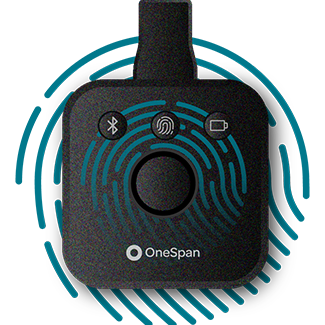The age of a workforce free from passwords

Now that digitalization has become ubiquitous and remote work is here to stay, organizations worldwide are grappling with the challenges a dispersed workforce can bring. Chief among these concerns is the issue of cybersecurity.
The current landscape of data security is a cause of unease for businesses, with a staggering 74% of all data breaches now including an element of human error and costing an average of $4.5 million globally. Despite the widespread adoption of digital practices, basic password hygiene is still not up to scratch, and it is clear the workplace is not equipped to keep remote environments secure.
Dispersed workforces, coupled with the rapid digitization of business operations, demands a strategic rethink from business leaders on their approach. For remote collaboration between employees to remain safe, a more reliable authentication method that eschews traditional passwords to verify users is needed. It’s a big reason why experts predict that by 2025, over half of the workforce, and more than 20% of customer authentication transactions, will be passwordless – a notable escalation from the current rate of less than one in 10.
But what exactly is it about passwordless systems that provides that extra layer of protection, and what considerations do business leaders looking to adopt such an approach for their organization need to consider?
Navigating today’s threats
Nowadays, organizations face a more threatening array of security concerns than ever before, and the average leader is under immense pressure to safeguard business. For instance, phishing attacks continue to be one of the most common and persistent methods of social engineering and account takeover schemes globally, posing significant risks even to tech giants like Facebook and Twitter.
When it comes to phishing attacks – which deceive people into clicking malicious links to provide confidential information to criminals – relying solely on email security software for prevention is challenging. False negatives will always exist, providing cybercriminals with a way around prevention measures.
Traditional authentication solutions, such as passwords, no longer provide effective protection against current threats. At the same time, more secure solutions like digital signatures relying on legacy Public Key Infrastructure (PKI) often present implementation or usability challenges. In this setting, passwordless authentication emerges as a viable alternative, providing defense against evolving threats combined with enhanced usability.
Advanced authentication solutions for resilient cyber defense
Passwordless authentication methods have the capability to mitigate security risks by eliminating vulnerabilities associated with password-based credentials. This is the case because passwordless solutions do not rely on static passwords. Instead, they generate dynamic authentication codes that have a limited lifetime and can be used only once, or are based on unique human biometric characteristics, such as fingerprints.
Even more, the strongest forms of passwordless authentication methods offer phishing resistance, effectively guarding against phishing attacks and threats related to credential theft. This, in turn, reduces the risk of breaches and unauthorized access. A prime example of phishing-resistant, passwordless authentication methods are those based on the standards of the FIDO Alliance, a global industry alliance of leading authentication technology vendors.
Such authentication methods not only provide an extra layer of protection but also adapt to emerging threats, simultaneously meeting regulatory requirements, and reducing authentication friction for users. Consequently, they enhance the overall user experience and promote a more secure environment for business operations and critical systems that store sensitive data. In various countries, such as the United States and Australia, they also contribute to compliance – ensuring organizations stay ahead of evolving cybersecurity regulation.
Such advancements in authentication are crucial for enabling a secure, flexible remote work policy. They empower businesses to reap the benefits of the dispersed workforce, while allowing leaders to protect their organization without compromising on business continuity or data protection.
Considerations for passwordless adopters
It’s important for businesses considering the adoption of such systems to ensure that the implemented passwordless solution adheres to data privacy regulations – such as GDPR or HIPAA – especially if it is based on biometrics, such as fingerprint scans or face scans. Failing to do so could result in legal consequences, penalties, a tarnished reputation, and eroded end-user trust. Luckily, passwordless methods based on biometrics can leverage the biometric authentication systems present in today’s smart phones, such as Apple Face ID and Samsung Face Recognition. These biometric authentication systems operate fully client-side, avoiding the central storage of biometric data.
Finally, it’s important to consider establishing comprehensive user education programs to ensure a smooth transition and optimal system utilization. Developing a contingency plan with alternative authentication methods is also critical to safeguard business against system failures and ensure continuous operation.
Preparing for a passwordless future
Passwordless authentication is emerging as a key protection method enabling businesses to reduce the risk of breaches. Phishing-resistant passwordless authentication systems, such as those based on FIDO standards, present an effective method of reducing the threat of phishing and can help business leaders build future-ready and adaptable security protocols for their organizations.
With such solutions, business leaders can safeguard corporate data, resources, and the wider workforce, while enabling a flexible 'work from anywhere, anytime, on any device' policy, all without compromising security. This can ensure a protected and user-friendly setting across dispersed workforces for 2024, and well beyond.
This article by Frederik Mennes was first published on Techradar on March 26, 2024.










